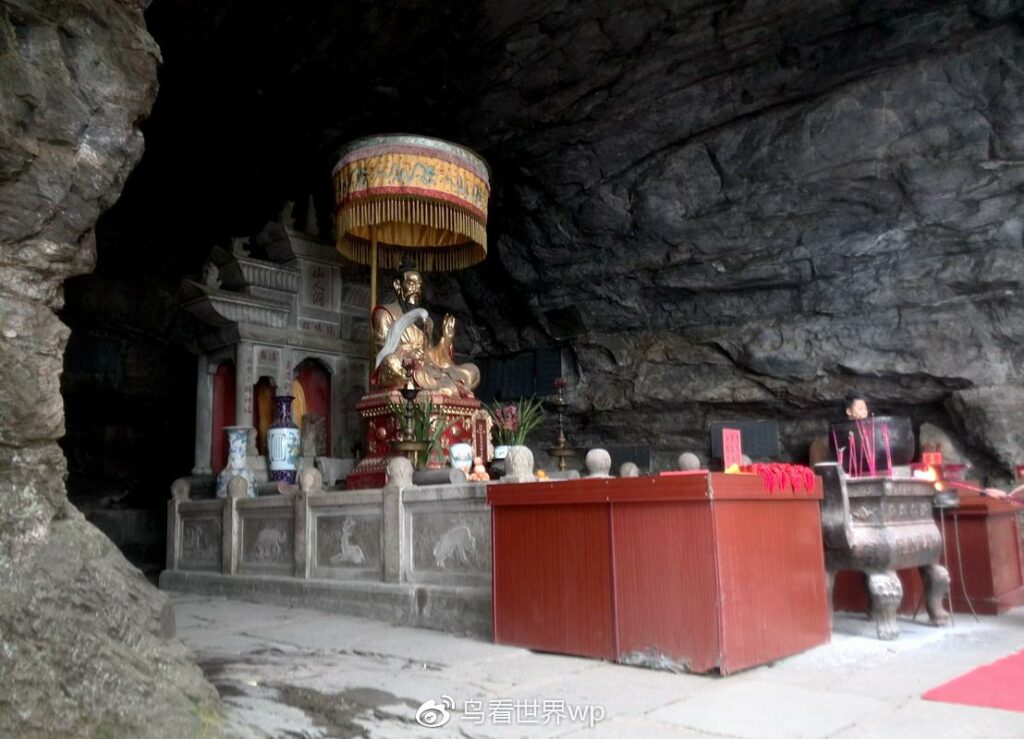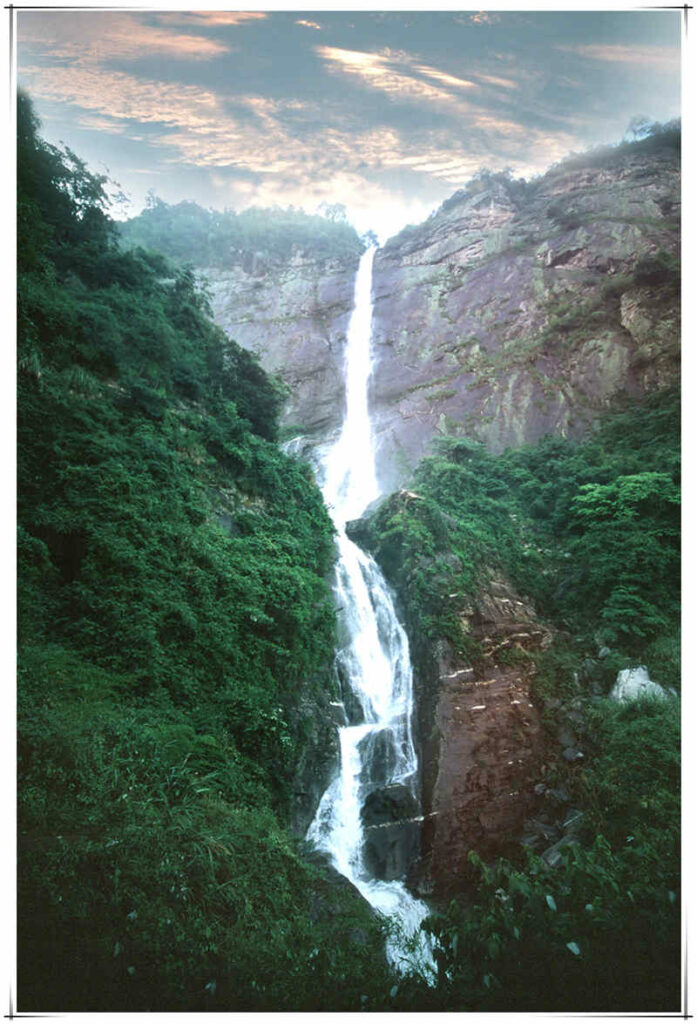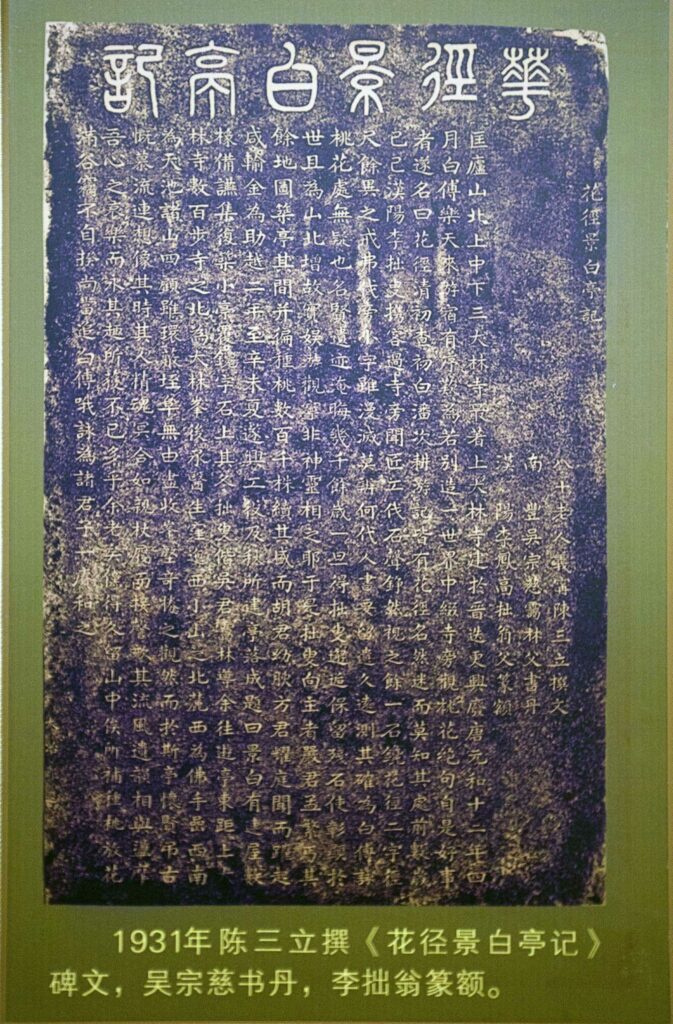
Lushan.
Even a child knows how valuable the forest is. The fresh, breathtaking smell of trees. Echoing birds flying above that dense magnitude. A stable climate, a sustainable diverse life and a source of culture. Yet, forests and other ecosystems hang in the balance, threatened to become croplands, pasture, and plantations.
The exhibit proposal aims to educate visitors on the cultural and ecological significance of Lushan, a UNESCO World Heritage Site in China. Through digital resources and interactive elements, the exhibit will showcase Lushan’s beauty, history, and ecological diversity. It will also highlight the challenges posed by climate change and the efforts to mitigate these threats. The exhibit will feature an image gallery, videos, 3D models, and an interactive map to provide visitors with a comprehensive understanding of Lushan’s unique features and cultural heritage. By immersing visitors in Lushan’s values and showcasing the impact of climate change, the exhibit will raise awareness of the urgent need for climate action and sustainable development practices. It will serve as a platform to promote the potential benefits of using digital technology to preserve and promote cultural heritage.
— Volunteer
“Lushan’s natural beauty and cultural heritage are truly remarkable, making it a must-visit destination for anyone interested in China’s rich history and stunning landscapes.”
HISTORICAL VALUE
ARTISTIC VALUE
HISTORICAL VALUE
Lushan’s cultural heritage provides a vivid record of the region’s history, cultural evolution, and key events. For instance, during the Wei, Jin, Southern and Northern Dynasties, and Tang and Song Dynasties, Lushan became an important religious center in southern China. The establishment of the Pure Land Buddhism and the Linji and Caodong schools of Zen Buddhism by Daoji and Mazu Daoyi, respectively, significantly contributed to the Chinese assimilation and widespread dissemination of Buddhism. Lushan also played a crucial role in the development of Daoism, with Lu Xiujing establishing the “Southern Celestial Masters Dao” based on Taishanggong teachings. This southern school of Daoism coexisted with the “Northern Celestial Masters Dao” established by Kou Qianzhi during the Northern Wei Dynasty, both having far-reaching influences.


The Bailudong (White Deer Grotto) Academy and Lianxi Academy played significant roles in Chinese feudal cultural education, making Lushan an important center for learning. Moreover, Lushan’s cultural heritage reflects modern history developments, such as the Western-style villas on Guling and the “Three Major Public Buildings,” which signify the beginning of traditional Chinese architecture’s acceptance and integration of Western culture.
ARTISITIC VALUE
Lushan’s cultural heritage boasts more than 2,246 poems collected in “Lushan Zhi” and “Lushan Xu Zhi,” which hold important positions in Chinese poetry history. Examples include Li Bai’s “Admiring Lushan Waterfall” and Su Shi’s famous philosophical poem “Written on the Wall at West Forest Temple.” Additionally, Lushan’s over 900 cliff inscriptions and 300 stone tablets showcase a diverse range of calligraphy styles, contributing to Lushan’s rich artistic heritage.
望庐山瀑布
(唐)李白
日照香炉生紫烟,
遥看瀑布挂前川。
飞流直下三千尺,
疑是银河落九天。
The Waterfall in Mount Lu Viewed from Afar
Li Bai
The sunlit Censer Peak
exhales incenselike cloud;
Like an upended stream
the cataract sounds loud.
Its torrent dashes down
three thousand feet from high
As if the Silver River
fell from the blue sky.


Discover the beauty of Lushan's peaks and falls, Through a 360 VR tour that beckons and calls. Glide through ancient forests, where rhododendrons reside, In a virtual realm where nature and wonder collide. Witness the serenity of temples, standing tall and grand, As you traverse this mystical, enchanting land. From the Hanpokou Scenic Area to Wulao Peak, A treasure trove of culture and history, yours to seek. Embrace the immersive journey, a feast for your eyes, As you explore Lushan Mountain's secrets and surprise. Step into a world where the past and present unite, Embark on a 360 VR tour, and let Lushan's charm take flight.
360 virtual tour

Climate Threats

Impacts on Flora and Fauna:
a. Lushan Rhododendron:
- Rising temperatures have shifted the plant’s natural habitat.
- The population has significantly decreased over the past decade.
b. Lushan Salamander:
- Habitat loss and population decline are driven by higher temperatures and altered precipitation patterns.
- The decline in the salamander population impacts the overall health of the ecosystem, as they play a crucial role in controlling insect populations and maintaining balance within the food web.

Spread of Invasive Species:
- Chinese Tallow Tree:
- This non-native species disrupts the balance of the local ecosystem.
- It outcompetes native plants, leading to a decline in biodiversity.
- The presence of the Chinese Tallow Tree threatens the survival of various animal species that depend on native flora for their habitat and sustenance.

Damage to Architectural Heritage:
a. Increased frequency and intensity of extreme weather events:
- Torrential rainfall and landslides have accelerated the erosion of ancient buildings, temples, and monuments.
- These weather events pose a serious threat to the structural integrity of the historic sites, requiring extensive restoration and preservation efforts.
b. Specific examples:
- The historic Bailudong Academy, built during the Tang Dynasty, has suffered structural damage due to repeated flooding and landslides.
- Other culturally significant structures, such as the Wulao Peak and the Hanpokou Scenic Area, are also at risk of deterioration due to the impact of climate change.
Adaptation strategies
Ecosystem Conservation:
a. Habitat restoration: Implement reforestation and revegetation projects to restore degraded areas and create suitable habitats for native flora and fauna, such as the Lushan Rhododendron and Lushan Salamander.
b. Invasive species control: Monitor and control the spread of invasive species like the Chinese Tallow Tree through early detection, removal, and public awareness campaigns.
c. Wildlife corridors: Establish and maintain wildlife corridors to connect fragmented habitats, allowing species to migrate and adapt to changing climate conditions.
Cultural Heritage Preservation:
a. Structural reinforcement: Strengthen and retrofit historic buildings, temples, and monuments, like the Bailudong Academy, to make them more resilient to extreme weather events and natural disasters.
b. Drainage systems improvement: Enhance existing drainage systems and develop new ones to reduce the risk of flooding and landslides that threaten architectural heritage.
c. Regular maintenance and monitoring: Implement regular maintenance and monitoring programs to identify and address any signs of structural damage or erosion promptly.
Climate Change Monitoring and Research:
a. Climate data collection: Establish a network of weather stations and monitoring equipment to collect accurate climate data specific to Lushan Mountain.
b. Research collaborations: Encourage collaboration between local institutions, researchers, and international organizations to study the impacts of climate change on Lushan’s ecosystems, cultural heritage, and tourism industry.
c. Early warning systems: Develop early warning systems for extreme weather events and natural disasters, enabling timely response and mitigation measures.